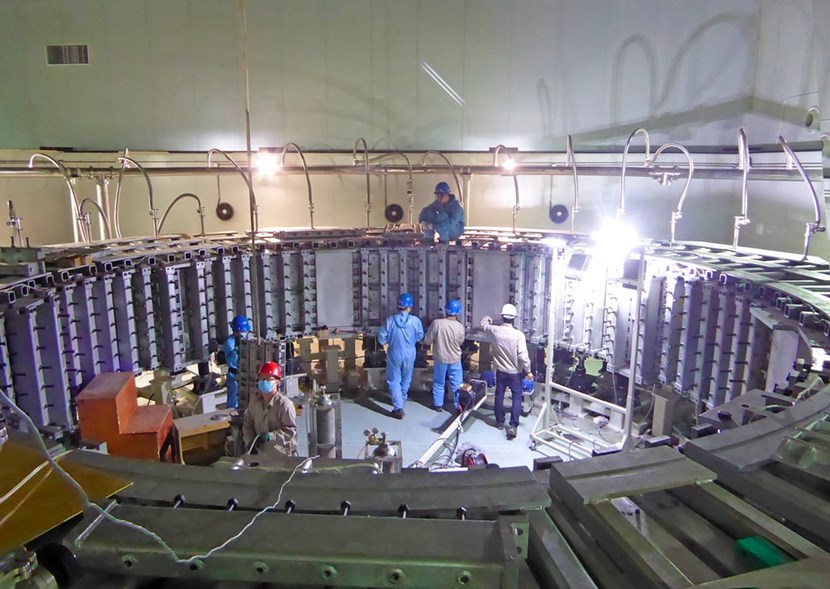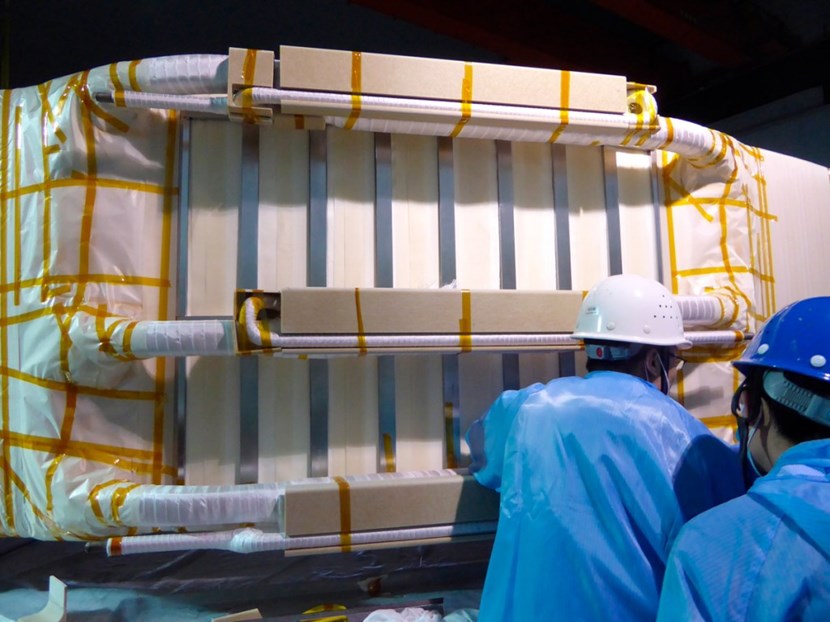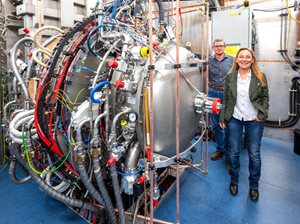ITER NEWSLINE
-
Poloidal field coil #6
The home stretch
Poloidal field coil #6 | The home stretch
In Hefei, China, a 400-tonne ring magnet procured by the European Domestic Agency is entering the final phase of production—resin impregnation. In just over one month, the component will be ready for packing and shipment to the ITER site.

This mould in nearly ready to receive poloidal field coil number #6 for vacuum pressure impregnation, a process that takes two to three weeks (including leak testing and drying).
Six years after a collaboration agreement was signed between the European Domestic Agency Fusion for Energy, responsible for procuring the component, and supplier ASIPP (the Institute of Plasma Physics/Chinese Academy of Sciences), ITER's sixth poloidal field coil, PF6, is being prepped for final coil impregnation.
PF6 is the second smallest of the ITER ring magnets in terms of diameter (10 metres), but the heaviest due to a higher number of stacked pancakes (nine instead of six or eight), a greater number of coil turns (twice as many as PF1) and exceptionally heavy clamps.
This last major production step ensures that the complete stack of nine double pancakes is electrically insulated and creates a rigid assembly. Following vacuum pressure impregnation and the completion of piping and instrumentation, the coil will be tested and packed for shipment.

Some of the external components of the coil—joint and clamps—are wrapped by ASIPP technicians before vacuum pressure impregnation.
Fusion for Energy and ASIPP teams have collaborated closely throughout the multiyear fabrication process, from qualification activities back in
2016 and
2017, through pancake
winding and pancake
impregnation. When it reaches the ITER site, the completed component will be delivered for cold testing to the European Poloidal Field Coils Winding Facility.
In the assembly schedule of the ITER device, PF6 will be the first of the six poloidal field coils to be installed, lowered by overhead crane into the "dish" of the cryostat base to its position under the vacuum vessel.
A ceremony for component completion is planned on 18 July at ASIPP.
Click here to see a report on the Fusion for Energy website.
return to the latest published articles








